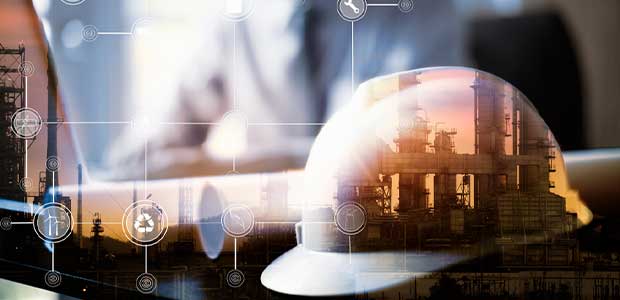
Smarter, Safer, Smaller: The Future of Wearable Technology
More data than ever is being collected.
- By Tim Turney
- Oct 03, 2022
Nearly 90 percent of Environment, Health, and Safety (EHS) professionals feel technology is essential or valuable to EHS management success. Wearable technology has been touted as a panacea for productivity and health and safety improvements for several years, but there has been difficulty in establishing a cost/benefit argument as well as dealing with worker concerns over privacy. However, technological advancements could see smart wearables increasingly deployed, as they become smarter, faster and more economical, delivering an undeniable return on investment (ROI).
The prevalence of mobile electronics has given access to better microprocessors and driven battery-powered technology, allowing devices to be made smaller and with more capabilities, a trend that will continue. New sensor technology such as Micro Electro-Mechanical Systems (MEMS) is also allowing new, lower-cost and smaller sensors and products to be developed.
Personal air sampling pumps and noise dosimeters could be considered the “original safety wearables” occupying the marketplace for more than 40 years. However, current monitoring practices tend to result in a small number of workers being monitored for short periods throughout the year because of the length of time it takes to set up monitoring devices, the expense and the knowledge required for operation. However, as costs go down and the benefits go up, we can expect to see a situation where we can measure more of the workforce for an increased amount of time. Looking to the future, smart wearables that monitor workplace hazards may move beyond noise and dust to other health and safety risks. Smart wearables may also have more technology integrated into them, such as communication tools.
Technologies such as Artificial Intelligence (AI) may enable a health and safety professional to identify the top employees most at risk, crucial if 10 sites with hundreds of employees are being managed. In addition, AI could allow those responsible for health and safety to identify the most and least hazardous sites to get a clearer picture of causes of concern and improvement. We can expect technological advances to provide the overall risk factors for hazards such as dust, vibration and noise, ensuring that those responsible for health and safety can start evaluating and reducing the hazards.
Software will ensure more data than ever can be collected. Managers will be able to review operations, predict exposure, offer training and incentivize individuals who are wearing PPE at the right time. Real-time decisions can be made, and worker disruption will be a minimum. When trying to advocate new processes, health and safety professionals can be met with challenges at the boardroom level and perceived ROI against any new practices. However, incorporating new software and sensor technology can also bring many benefits to the bottom line. Healthier workforces will be more productive and efficient, reducing absenteeism. Reduced claims and litigation will further reduce the overall cost to businesses. From hazardous noise exposure alone, OSHA estimates that employers spend $242 million annually on workers’ compensation for hearing loss disability.
While there may be challenges surrounding concerns over data privacy, more anonymity can be introduced as the amount of data collected increases. Self-management apps could be developed to allow employees to understand their health risk, making sure that data privacy is managed along the way. This could also provide the opportunity to empower employees to participate in the management of their health. Explaining the technicalities of occupational hygiene through outlining the range of substances a worker can be exposed to, the levels where exposure is above regulatory limits and the history of the legislation is a time-consuming process that does not guarantee an engaged worker at the end of it. However, incorporating a self-management app, sensor technology and putting such equipment on all workers will simultaneously measure a multitude of exposures and ensure the individual understands the meaning behind the work through the alarms within the device. It could be the tool that will really change behavior and keep more workers safe.
This article originally appeared in the October 1, 2022 issue of Occupational Health & Safety.
About the Author
Tim Turney, Global Marketing Manager at occupational hygiene and workplace hazard monitoring expert Casella, looks to the future of health & safety technology.